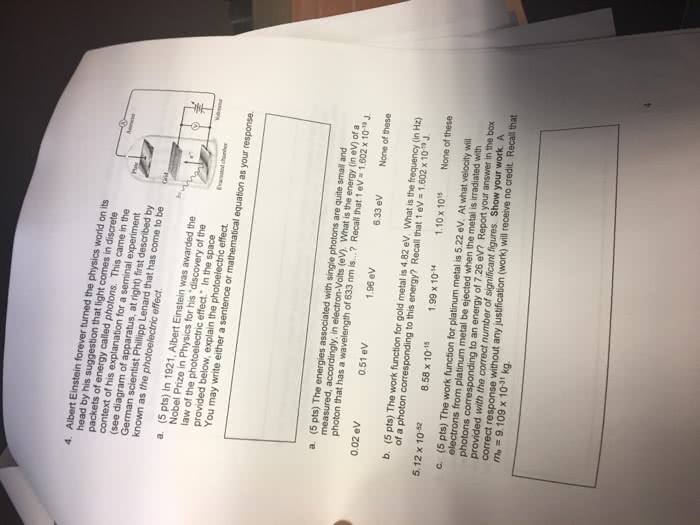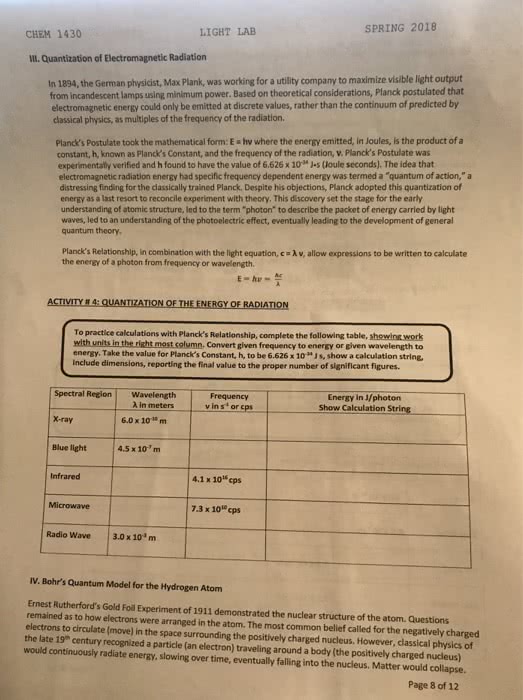CHEM 1300 Lecture Notes - Lecture 3: Photon, Junkers J 1, Niels Bohr
Document Summary
= 1. 02 (cid:1005)(cid:1004) (cid:1005)(cid:1013)j (cid:3042)(cid:3047)(cid:3042)(cid:3041)= h(cid:2021) (cid:2019) = 7. 01 (cid:1005)(cid:1004) (cid:1011)m (cid:2021)(cid:2019)= c the electron. Sub in : e = (cid:1011). (cid:1004)(cid:1005) (cid:1005)(cid:1004) (cid:1011)(cid:3040) Binding energy = photon energy - kinetic energy. What is nu ? nu and mu sound really similar. E = h(cid:2021) (cid:2021)= 4. 3 (cid:1005)(cid:1004)(cid:1005)(cid:1008) (cid:1005) h = 6. 63 (cid:1005)(cid:1004) (cid:1007)(cid:1008)j s. 2. 8 (cid:1005)(cid:1004) (cid:1005)(cid:1013)j < 3. 7 (cid:1005)(cid:1004) (cid:1005)(cid:1013)j *so it does(cid:374)"t do a(cid:374)ythi(cid:374)g. E = h(cid:2021) (cid:2021)= 7. 5 (cid:1005)(cid:1004)(cid:1005)(cid:1008) (cid:1005) h = 6. 63 (cid:1005)(cid:1004) (cid:1007)(cid:1008)j s. Kinetic energy = 5. 0 (cid:1005)(cid:1004) (cid:1005)(cid:1013)j - 3. 7 (cid:1005)(cid:1004) (cid:1005)(cid:1013)j. The energy of electrons are described relative to a free, stationary electron which has 0 energy. The photoelectric effect focused on energies of a bound electron as compared to a free electron. Energy (cid:272)a(cid:374)(cid:374)ot disappea(cid:396) (cid:449)he(cid:374) it"s t(cid:396)a(cid:374)sfe(cid:396)(cid:396)ed to ato(cid:373). If the photon energy matches an energy difference in an atom, the photon can be absorbed.



